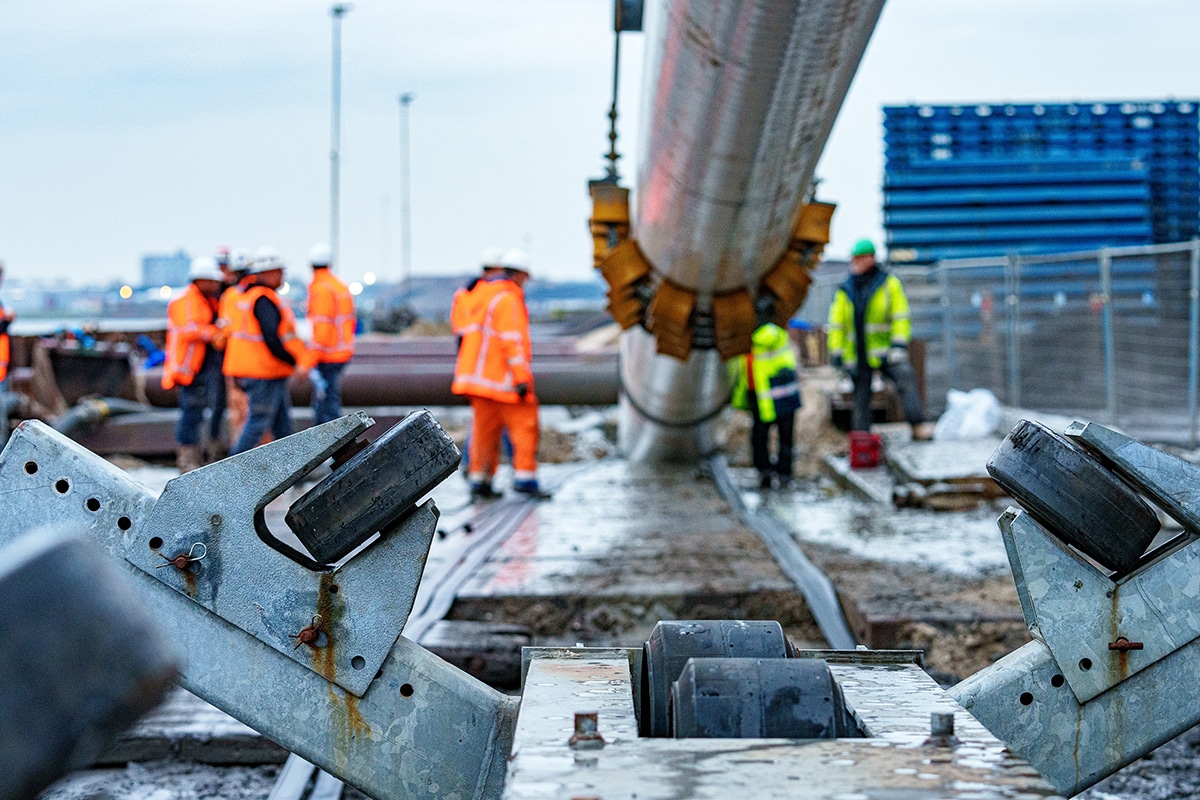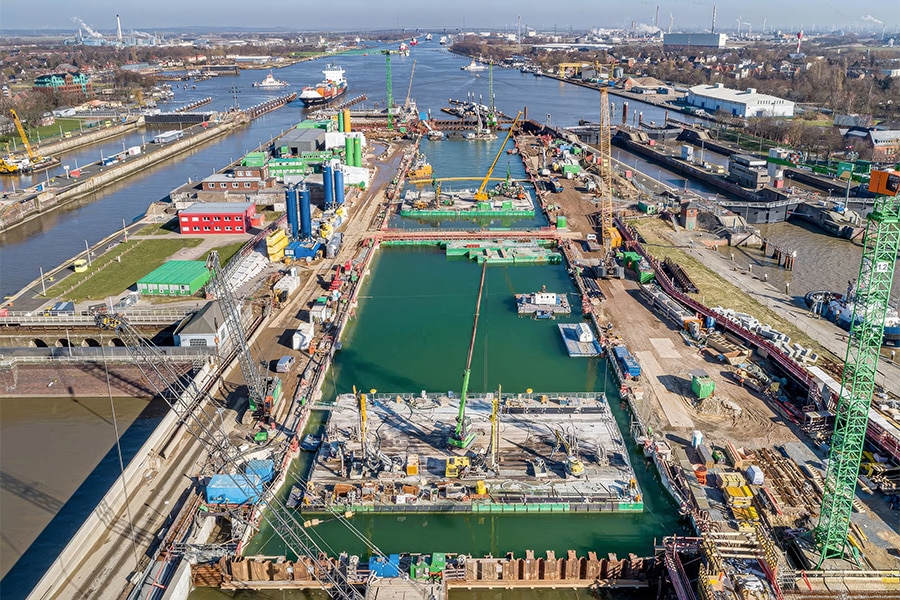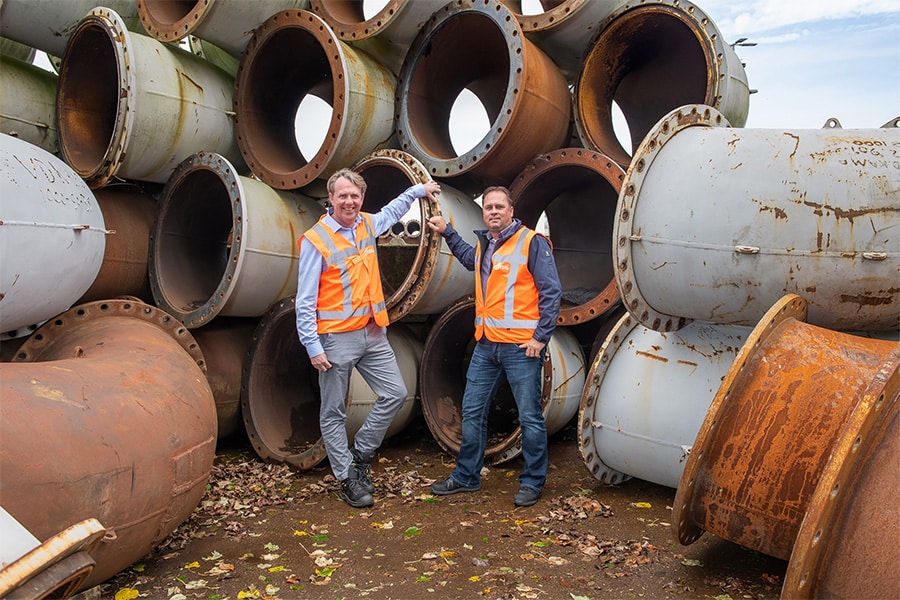
Force sensors measure impact of waves on flood defenses
As sea levels rise, the construction of flood defenses is becoming increasingly important. An important part in the development of new flood defenses is measuring the impact of waves on the structure. In the Fluid Mechanics Laboratory of TU Delft's Faculty of Civil Engineering, Brazilian Ermano de Almeida conducted a project to measure the impact of waves on flood defenses with an overhang. He used force sensors from HBM for this purpose. The project also involved other partners such as the NWO, Rijkswaterstaat, Witteveen + Bos, PT Structural and Deltares, the Dutch knowledge and innovation institute for water and subsoil. The results of the research are important for the development of modern hydraulic engineering installations, such as the new water outlets in the Afsluitdijk.
De Almeida smoothly lists a large number of floods and levee failures that have caused enormous inconvenience and damage worldwide. New Orleans and Houston are still in everyone's memory, but Germany and Southeast Asia have also experienced severe flooding in recent decades. "Developing good flood defenses is becoming increasingly important as more and more areas face a greater risk of flooding due to rising sea levels and subsidence. The likelihood of severe storms is also increasing. Therefore, research into the quality of flood defenses is becoming increasingly important," he stressed.
De Almeida is researching the impact of waves on models of steel flood defenses in the Hydraulic Engineering Department as part of his doctoral studies at TU Delft. De Almeida studied civil engineering in Madrid and Aachen and earned his master's degree at TU Delft. When he got the opportunity there to carry out the research project on flood defenses, he grabbed it with both hands. Not only because he found the project interesting both theoretically and practically, but also because water management and flood control are one of the most important challenges for the coming decades.
Vertical hydraulic flood defenses of metal or concrete with an overhang
De Almeida's ongoing research focuses on vertical hydraulic flood defenses made of metal or concrete with an overhang. These are common in harbors, at locks and water outlets, but have also been widely used in Dutch flood defenses along the North Sea coast. There they are used in combination with hydraulic and mechanical installations to close off water outlets or waterways during high water or storm surge. As a flood barrier, this type of construction is especially suitable in places where an opening for the flow of water or for transport purposes is necessary, but where the opening must also be able to be closed to prevent flooding at high tide during storms.
The goal of the research project is to measure the force of impact that waves exert on the vertical structure. Especially in vertical structures with an overhang, these forces are enormous, because the force of the wave cannot be derived upward.
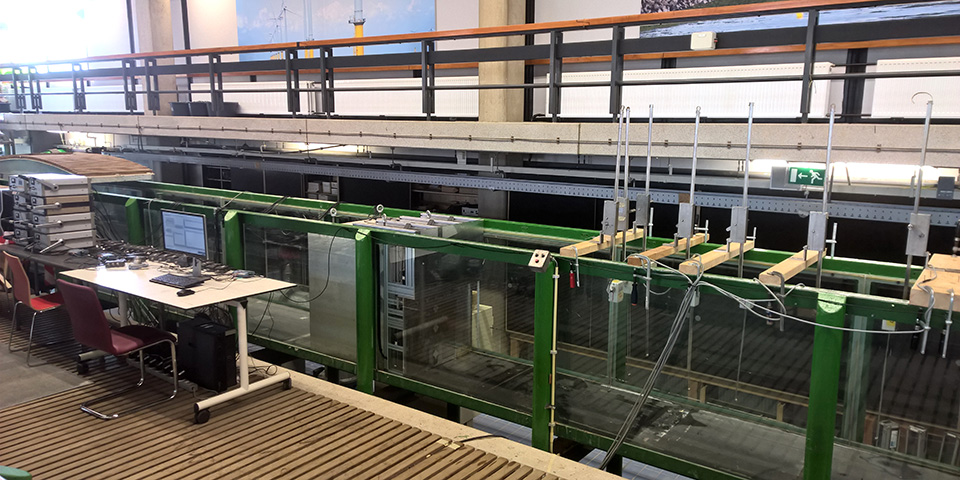
De Almeida's tests were conducted in one of the largest water flumes in the lab.
This also increases the pressure on the vertical part of the dam. In addition, the waves also exert a tremendous force on the overhang. This could be, for example, a concrete protective edge above the water barrier or the ceiling of the opening in which bulkheads are suspended. The effect of the resonance and vibrations of the relatively thin metal plates on the life of the structure and the material used under such loads is also interesting to investigate, according to De Almeida. "The number of situations in which such hydraulic structures failed is not very numerous," De Almeida explains, "but there are several cases where the lack of knowledge about the characteristics of the load and the response of the structure to it have led to unsafe situations and sometimes even to the failure of the dam. By gathering more information about the strength of the impact of waves, we are better able to make robust and safe structures without oversizing them as is sometimes done today. This will allow us to save time, materials and costs during construction. Perhaps based on the research we can even develop new ways to build these types of flood defenses."
Water tank and force sensors
The tests were conducted in TU Delft's Fluid Mechanics Laboratory. The lab has an area of about 5,000 square meters, 1,700 of which is for conducting experiments. Eight water chutes are available for experiments, capable of providing a water flow of 2 cubic meters per second. De Almeida's experiments were conducted in one of the largest water flumes in the lab. It has a length of 42 meters, is 80 centimeters wide and 1 meter high. At the end of the channel is a solid concrete block measuring 80 x 80 x 100 centimeters, to which an aluminum plate 1 centimeter thick is mounted using aluminum profiles. Between the aluminum frame and the metal plate, nine U3 force sensors from HBM were installed in a row, which have a capacity of 1 kN. HBM recommended these force transducers to the researchers because they are made of stainless steel, are not sensitive to temperature influences and are therefore ideally suited for the wet test rig. They also have high inherent stiffness, compensate bending moments and are insensitive to lateral forces, making the measurement results highly reliable.
The sensors are coupled to measuring amplifiers developed by TU Delft itself. They record the impact of wave action at a sample rate of 5000/s. On a monitor, De Almeida can view the measurement data in real time. The screen shows the height of the waves and the impact on the structure. The setup is flexible. De Almeida can adjust the height of the metal plate, the dimensions of the overhang and the position of the force sensors.
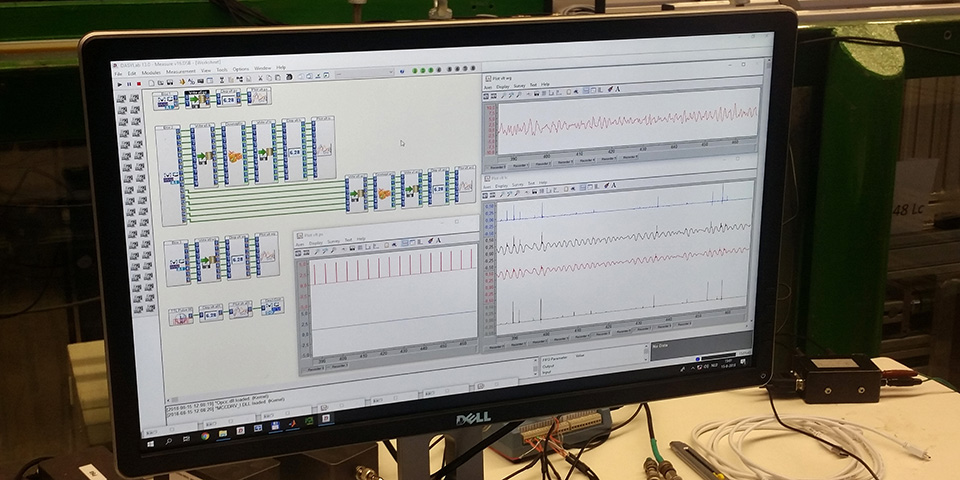
On a monitor, De Almeida can view the measurement data in real time.
In the water flume, series of regular and irregular waves of variable height are generated using a wave maker. This is equipped with active reflection compensation, which neutralizes returning waves so as not to affect the measurement data. A few meters in front of the metal plate, eight sensors hang in the water at intervals of about forty centimeters, measuring the characteristics of the waves. Three cameras record the images of the tests in order to study the corresponding images in case of unusual measurement results.
IJsselmeer sluices in the Afsluitdijk
For the design of the test stand, the IJsselmeer sluices in the Afsluitdijk were initially used as a reference. There are sluice gates at two locations in the Afsluitdijk that are closed with steel gates during high water and storms. The waves hitting the sliders under the horizontal protective structure are suddenly blocked, exerting enormous forces on the structure. The structure was designed eighty years ago and is being renovated along with the entire Afsluitdijk. De Almeida plans to apply the knowledge gained during his research to other locations around the world, such as the United States. There, because of the severe floods of recent years and TU Delft's good reputation in the field of hydraulic engineering research, people might be very interested in the research.
De Almeida cannot present completed results at this time because the trials are still ongoing. The raw data will be worked out in the coming months and presented in his dissertation in the coming years. He expects that his research will provide valuable information for the engineering and construction of new flood defenses.
